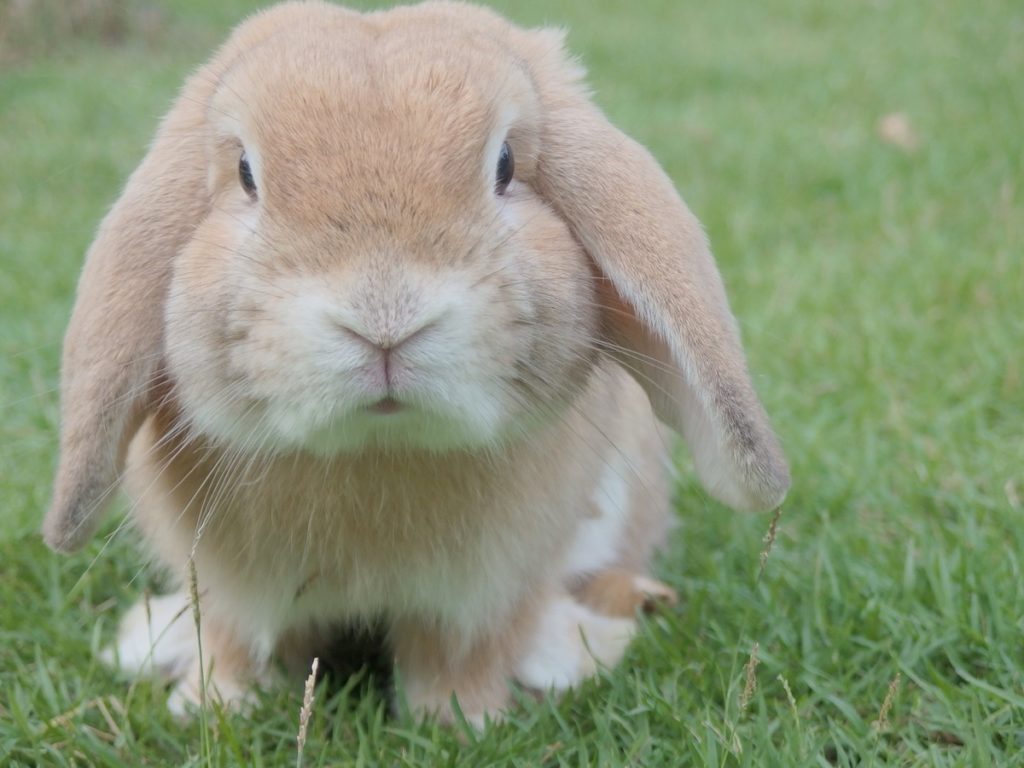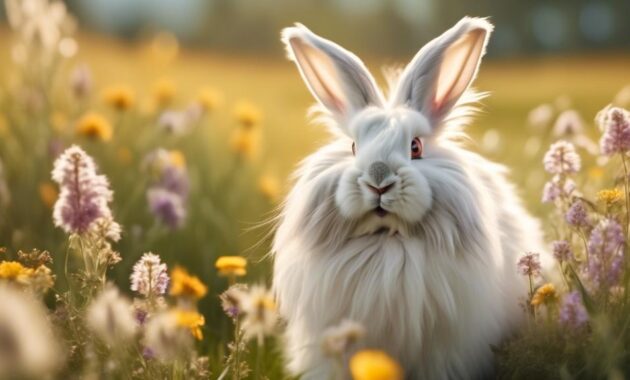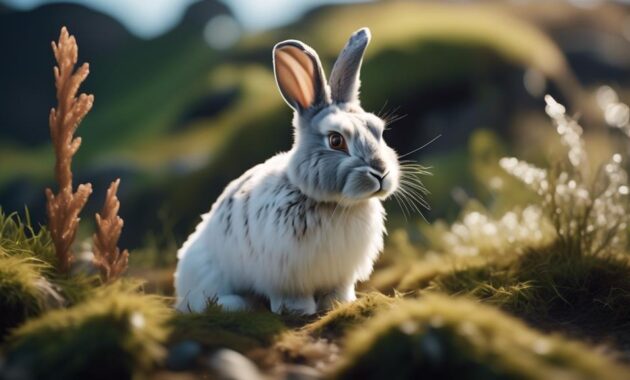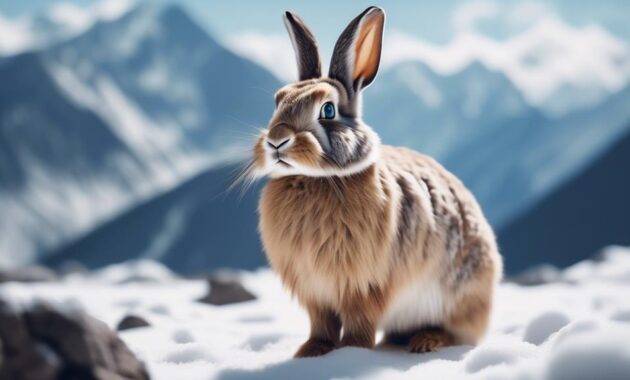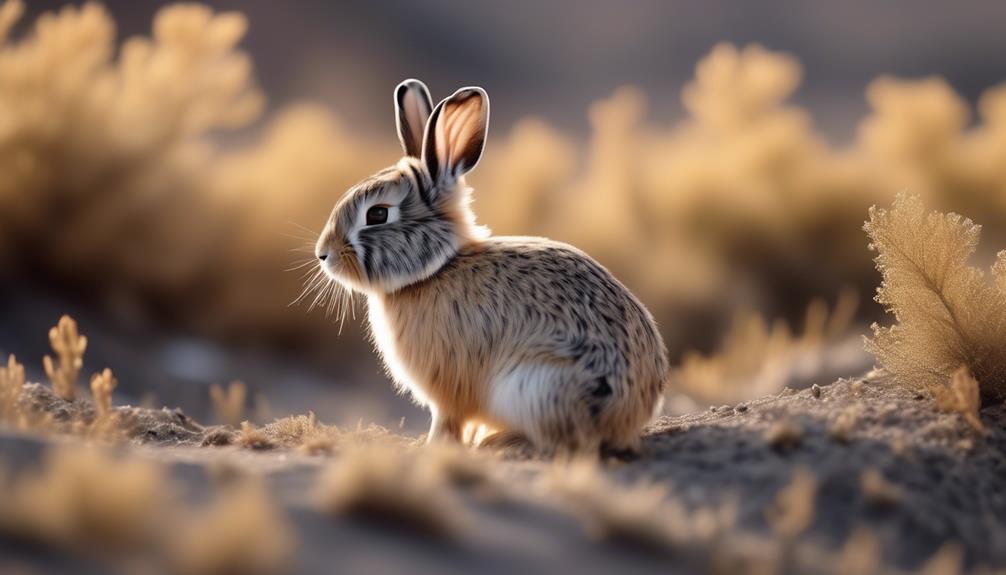
Did you know that the Columbia Basin Pygmy Rabbit, once widespread across the United States, now teeters on the edge of extinction? This tiny creature, with its short and strong legs, is fighting for survival in a single area in Washington state.
Facing threats such as habitat loss and predation, the Columbia Basin Pygmy Rabbit’s future hangs in the balance. But what makes this rabbit so unique? And what efforts are being made to save it from the brink?
Join us as we unravel the story of the endangered Columbia Basin Pygmy Rabbit and discover the challenges it faces in its fight for survival.
Key Takeaways
- The Columbia Basin Pygmy Rabbit is a small, compact rabbit native to a single area in Washington state.
- It is an endangered species and has faced near extinction due to loss of habitat and predation.
- Conservation breeding programs have helped repopulate their native habitats and preserve the species.
- The Columbia Basin Pygmy Rabbit is not suitable as a pet and is best suited for its natural wild habitat.
The Columbia Basin Pygmy Rabbit: An Endangered Species
The Columbia Basin Pygmy Rabbit is an endangered species, facing numerous threats to its survival. One of the main challenges this tiny rabbit faces is the loss of its natural habitat. As land is developed for agriculture, urbanization, and other human activities, the rabbits lose their homes and sources of food.
Additionally, predation is another major threat to their population. Predators such as coyotes, owls, and hawks pose a constant danger to these vulnerable rabbits. Climate change and wildfires also contribute to the decline of their habitat and further endanger their survival.
Conservation efforts are crucial in preserving this species and ensuring their continued existence in the wild. It’s important to raise awareness and take action to protect the Columbia Basin Pygmy Rabbit from these threats.
Physical Characteristics and Adaptations
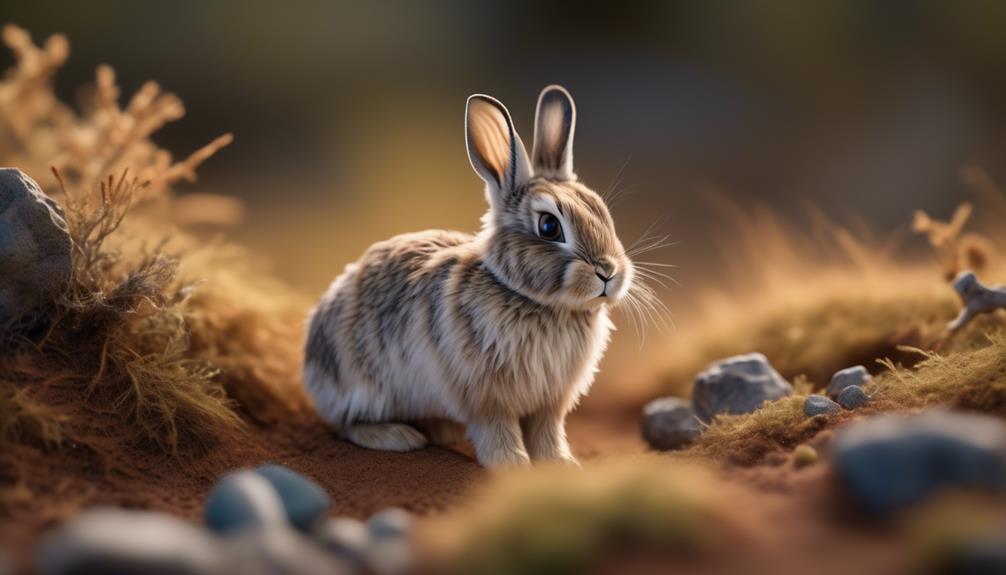
To understand the physical characteristics and adaptations of the Columbia Basin Pygmy Rabbit, we must delve into its unique features and abilities.
- Compact body shape with round, compact bodies and small ears.
- Lightweight, weighing no more than 1lb and measuring around 9 to 11 inches long.
- Short and strong legs allow them to hop up to 15 miles per hour.
- Short tail, almost entirely hidden.
These physical attributes enable the Columbia Basin Pygmy Rabbit to navigate its natural habitat with ease. Their compact body shape and small ears allow them to maneuver through dense vegetation, while their short and strong legs facilitate quick and efficient movement. Their hidden tail helps them blend into their surroundings, providing them with camouflage and protection from predators.
These adaptations, combined with their small size, make the Columbia Basin Pygmy Rabbit well-suited for survival in the wild.
The History and Origin of the Pygmy Rabbit Breed
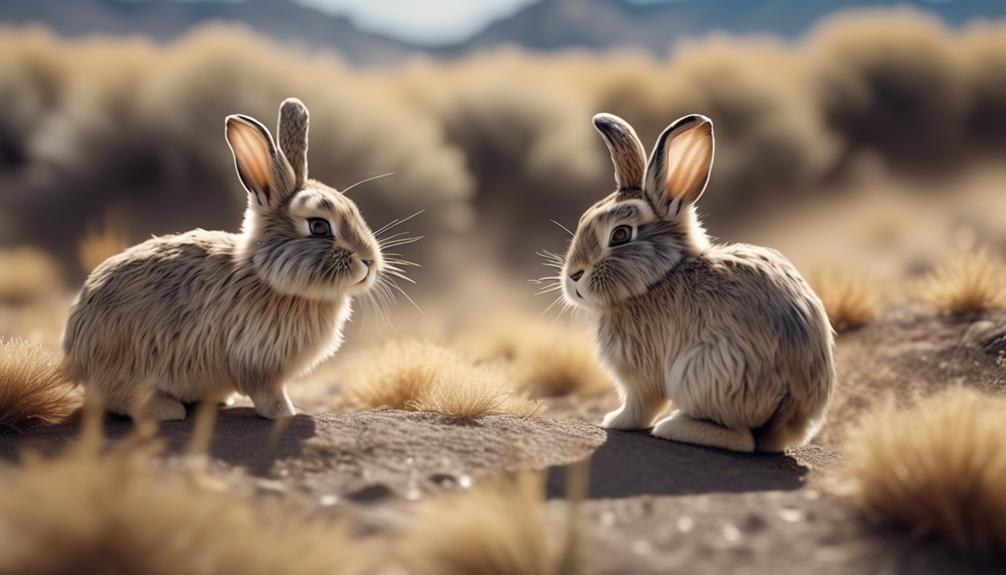
Now let’s explore the fascinating history and origin of the Pygmy Rabbit breed, shedding light on its unique journey and genetic background.
The Pygmy Rabbit, scientifically known as Brachylagus idahoensis, is native to a single area in Washington state. This breed of rabbit has an isolated population, which has resulted in genetic differences from its close relatives.
Due to its near extinction, the Columbia Basin Pygmy Rabbit is now federally listed as endangered. However, conservation efforts have been successful in repopulating their native habitats. These efforts have helped preserve the breed and prevent its extinction.
The Pygmy Rabbit’s history and origin highlight the importance of conservation and protecting endangered species.
The Unique Coat of the Columbia Basin Pygmy Rabbit
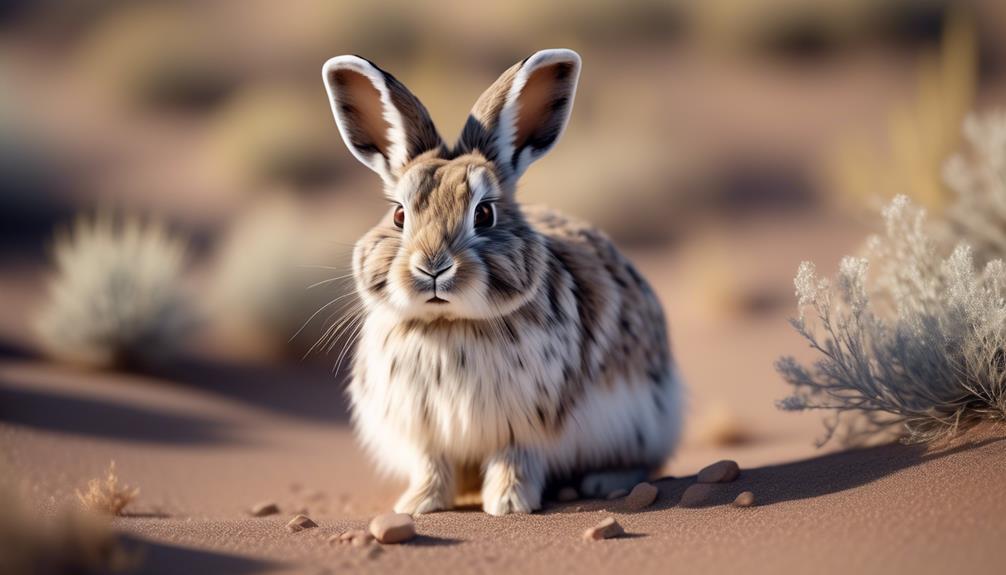
With its soft, fluffy fur and unique ability to maintain a constant internal temperature, the coat of the Columbia Basin Pygmy Rabbit is truly remarkable.
- The fur of the pygmy rabbit is denser and thicker in the winter, providing insulation against the cold.
- In the summer, the fur becomes slicker and lighter, allowing the rabbit to stay cool in the heat.
- The color of the fur is usually grayish-brown, with variations rarely present.
- Light spots can be found near the nostrils, while the margins of the ears have a whitish hue.
The coat of the Columbia Basin Pygmy Rabbit isn’t only beautiful but also essential for its survival in its native habitat. It helps the rabbit adapt to the changing seasons and maintain a stable body temperature, allowing it to thrive in the harsh environment of the Columbia Basin.
Care Requirements for the Endangered Pygmy Rabbit
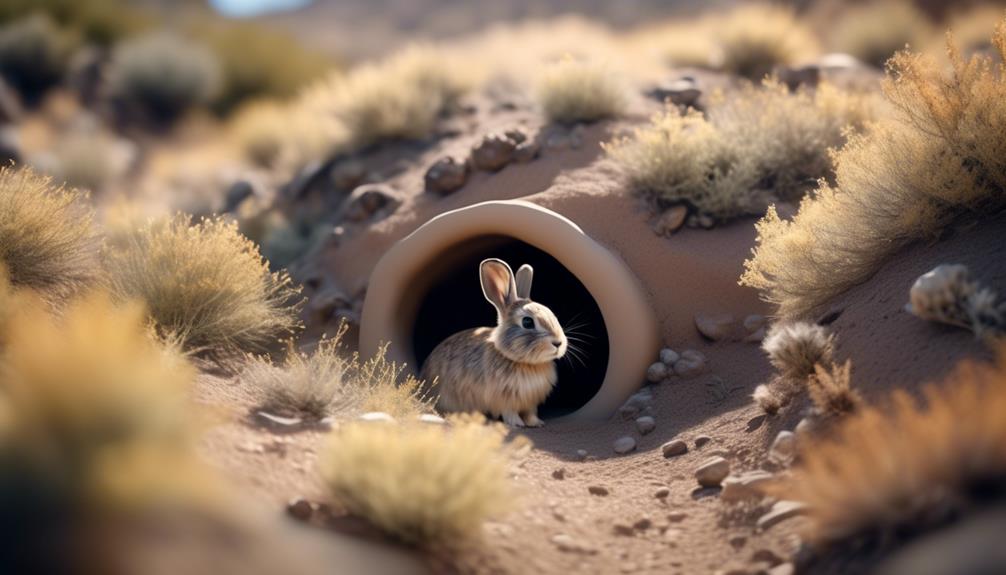
As we shift our focus to the care requirements for the endangered Pygmy Rabbit, it’s crucial to understand the necessary measures to ensure their well-being and survival in their native habitat.
These rabbits are native to the United States and dig their own burrows, which they use for hiding and protecting their young. Their diet mainly consists of sagebrush leaves. However, due to the loss of their natural habitat and predation, they were on the brink of extinction. Conservation breeding programs have played a significant role in preserving the species.
It’s important to note that these rabbits are timid, skittish, and unaccustomed to humans. They aren’t suitable as pets and are best left in their wild habitat. If you’re interested in owning a rabbit as a pet, consider dwarf rabbit breeds instead.
Health and Threats to the Columbia Basin Pygmy Rabbit
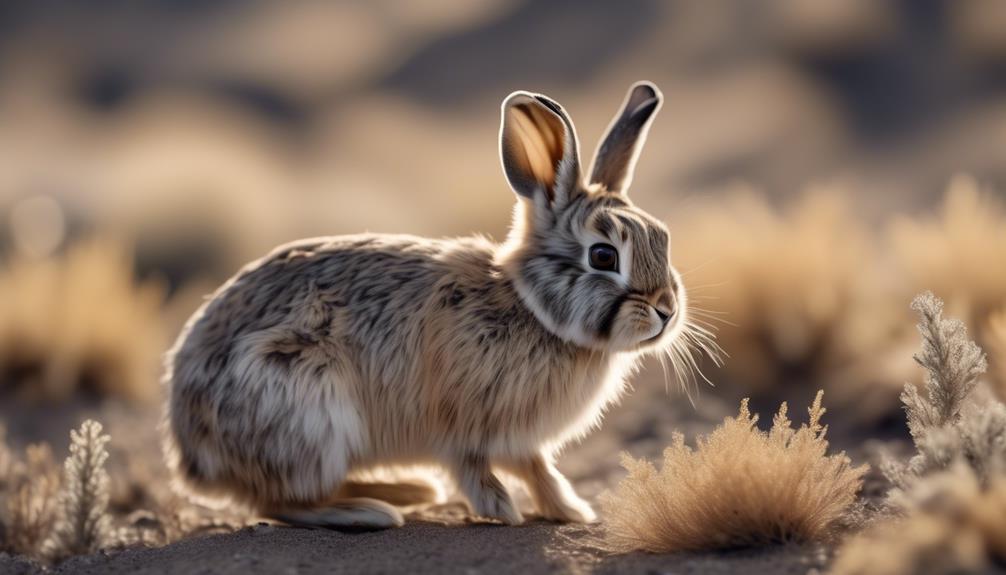
Conservation breeding programs have played a crucial role in preserving the endangered Columbia Basin Pygmy Rabbit by ensuring their health and protecting them from threats. These programs have helped to address the specific health needs of the Columbia Basin Pygmy Rabbit and mitigate the risks they face in their natural habitat.
Here are some of the threats that these programs have helped to mitigate:
- Loss of natural habitat: Conservation breeding programs have provided a safe environment for the rabbits, protecting them from the loss of their natural habitat due to human activities such as urbanization and agriculture.
- Predation: By being housed in protected enclosures, the rabbits are shielded from predators that would otherwise pose a significant threat to their survival.
- Disease: Through regular health check-ups and veterinary care, the rabbits are monitored for any signs of illness or disease, allowing for early intervention and treatment.
- Genetic diversity: Conservation breeding programs aim to maintain and increase genetic diversity among captive populations, which helps to ensure the long-term viability of the species.
Conservation Efforts and Breeding Programs
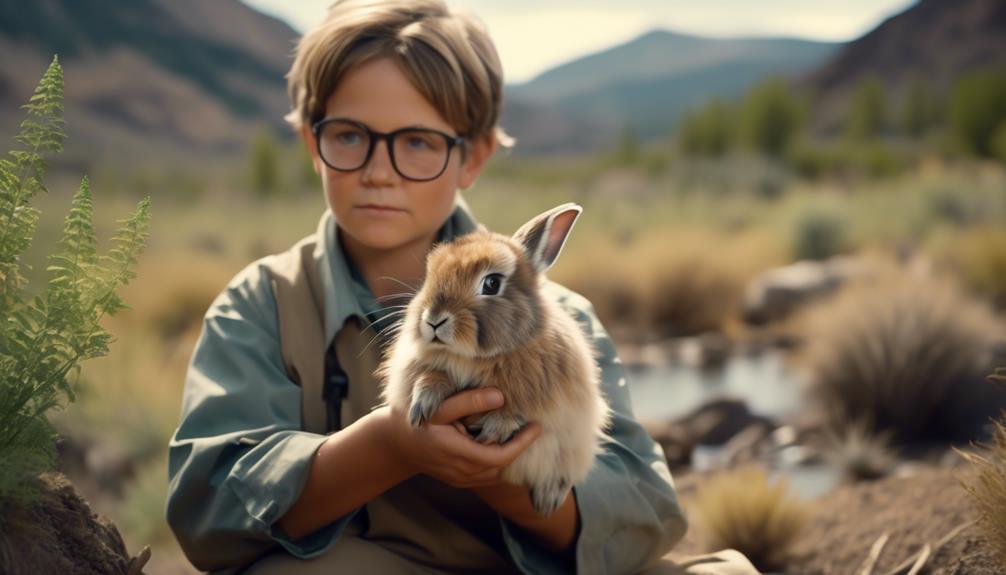
Preserving the endangered Columbia Basin Pygmy Rabbit and ensuring its long-term survival involves implementing effective conservation efforts and breeding programs.
Conservation organizations and government agencies have been working diligently to protect the habitat of these rabbits and prevent further loss of their population. Efforts include restoring native sagebrush habitats, managing predators, and reducing the impact of human activities in their range.
Additionally, breeding programs have been established to increase their population size and genetic diversity. These programs aim to breed healthy individuals in captivity and release them back into the wild. By carefully selecting mating pairs, monitoring their health, and providing proper care, these programs strive to boost the numbers of Columbia Basin Pygmy Rabbits and improve their chances of survival in their natural habitat.
The Behavior and Temperament of Pygmy Rabbits
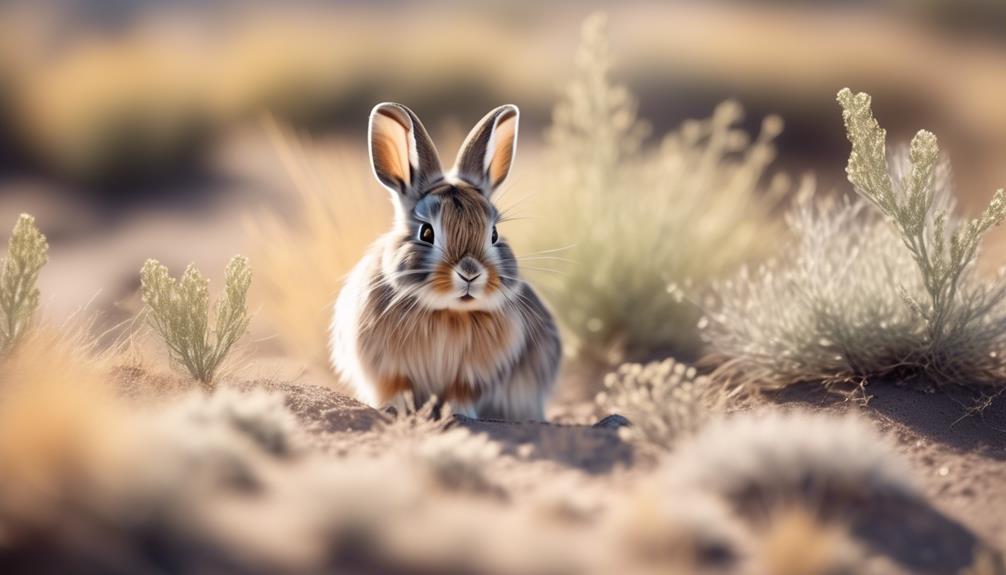
Pygmy rabbits exhibit unique behavior and temperament that are essential to their survival in the wild. Understanding their behavior can provide valuable insights into their conservation and management. Here are some key aspects of their behavior:
- Timid and skittish: Pygmy rabbits are naturally cautious and wary of humans, making them difficult to approach or handle.
- Burrow dwellers: They rely on burrows for protection and shelter, staying close to their burrow systems at all times.
- Limited range: Pygmy rabbits rarely venture beyond 200 yards from their burrows, preferring to stay within a small territory.
- Social interactions: They’ve limited social interactions and primarily interact during mating season or when raising their young.
These unique behavioral traits contribute to the pygmy rabbits’ ability to survive in their natural habitat.
The Importance of Preserving Their Native Habitat
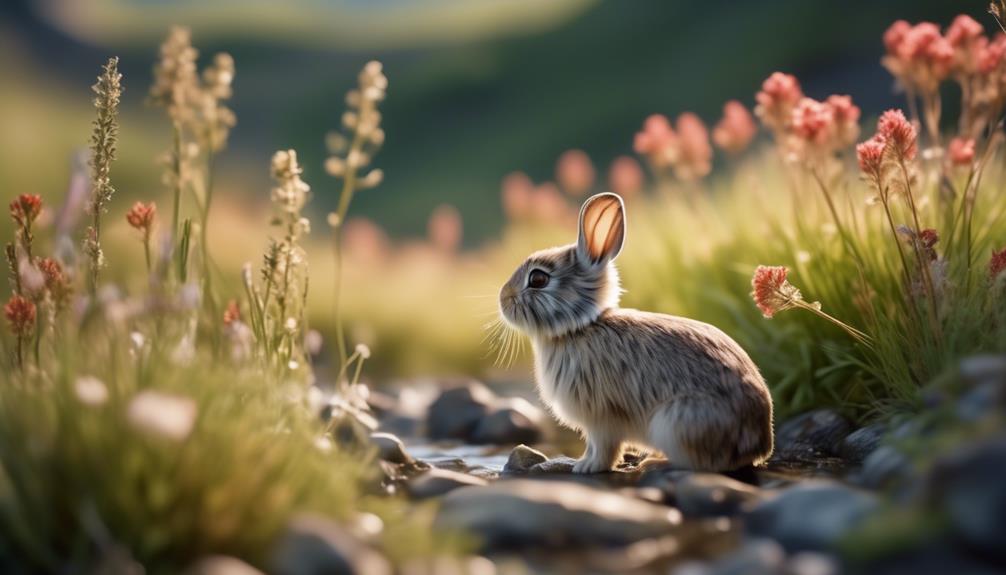
To ensure the survival of the endangered Columbia Basin Pygmy Rabbit, it’s crucial to protect and preserve its native habitat. The native habitat of these rabbits consists mainly of sagebrush shrublands in the Columbia Basin region of Washington state. These shrublands provide the necessary food and shelter for the rabbits to thrive.
Unfortunately, human activities such as agriculture, urbanization, and infrastructure development have resulted in the destruction and fragmentation of their habitat. This has led to a decline in their population and pushed them closer to the brink of extinction.
Why Pygmy Rabbits Are Not Suitable as Pets
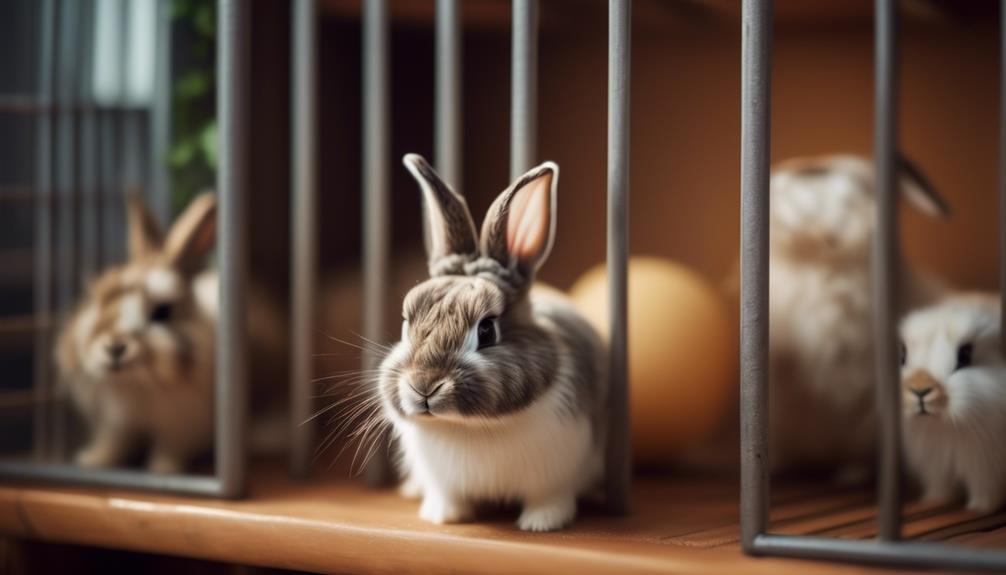
Are Columbia Basin Pygmy Rabbits suitable as pets?
While they may seem cute and cuddly, these endangered rabbits aren’t suitable for domestication. Here’s why:
- Wild Habitat: Pygmy rabbits are best suited for their natural habitat in the wild, where they can freely roam and exhibit their natural behaviors.
- Conservation Status: These rabbits are endangered and federally listed. Keeping them as pets can contribute to their decline in the wild.
- Timid Behavior: Pygmy rabbits are timid and skittish creatures. They aren’t accustomed to human interaction and may become stressed or anxious in a domestic setting.
- Specialized Care: These rabbits have specific care requirements, such as a diet consisting mainly of sagebrush leaves and the need for burrows for hiding and protecting their young. Meeting these needs can be challenging for pet owners.
For those looking for a pet rabbit, there are many other dwarf rabbit breeds that are better suited for domestication.
Frequently Asked Questions
What Are the Main Threats to the Columbia Basin Pygmy Rabbit?
The main threats to the Columbia Basin Pygmy Rabbit are loss of natural habitat and predation. Their mortality rate for adults is high, and conservation breeding programs are being used to ensure their survival.
How Do Conservation Breeding Programs Help Preserve the Species?
Conservation breeding programs help preserve the species by breeding and raising Columbia Basin Pygmy Rabbits in controlled environments. They aim to increase their population and genetic diversity, ensuring their survival and eventual release into protected habitats.
What Is the Mortality Rate for Adult Columbia Basin Pygmy Rabbits?
The mortality rate for adult Columbia Basin Pygmy Rabbits is 88%. Loss of natural habitat and predation are the main threats. Conservation breeding programs have been used to ensure their survival.
How Do the Physical Characteristics of the Columbia Basin Pygmy Rabbit Help It Survive in Its Habitat?
The Columbia Basin Pygmy Rabbit’s physical characteristics, such as its compact body shape, small ears, and short and strong legs, help it survive in its habitat by allowing it to navigate and hide effectively from predators.
What Is the Diet of the Columbia Basin Pygmy Rabbit?
The diet of the Columbia Basin Pygmy Rabbit consists mainly of sagebrush leaves. They rely on this food source to survive in their natural habitat, which is why the loss of sagebrush is a major threat to their population.
Why are Columbia Basin Pygmy Rabbits Endangered and What Can Be Done to Protect Them?
The Columbia Basin Pygmy Rabbits are endangered due to habitat loss, predation, and limited genetic diversity. To protect them, conservation efforts such as habitat restoration and captive breeding programs are essential. These initiatives aim to ensure the survival of this unique species with its distinct Himalayan rabbit body shape.
Conclusion
In conclusion, the endangered Columbia Basin Pygmy Rabbit faces numerous challenges in its struggle for survival. With a short lifespan and high mortality rate, conservation breeding programs have been crucial in preserving this species. However, their future remains uncertain.
It’s important to continue efforts to protect their native habitat and raise awareness about the importance of preserving this unique and remarkable creature. The Columbia Basin Pygmy Rabbit serves as a reminder of the fragility of our natural world and the need for conservation efforts to prevent further loss of biodiversity.

